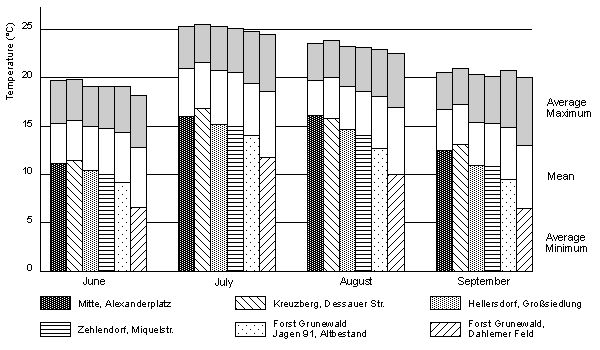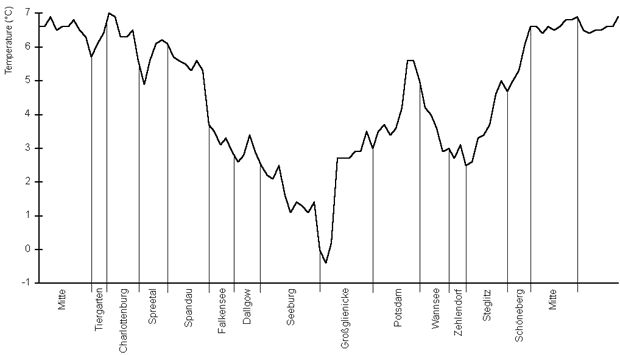Metropolitan areas are subject to fundamental modifications in their thermal balance compared to the surrounding countrysides. Reasons for this are:
- modifications in heat storage capacity and conductivity; and changes in wind and exchange relationships due to masses of built-up structures
- the decrease of evaporating surfaces caused by the high degree of surface sealing and the lack of areas covered with vegetation
- the warming of the atmosphere by the so-called greenhouse effect (especially due to increases of CO2)
- inflows of energy and water vapor from anthropogenic sources.
Especially problematic aspects of the resulting urban climate are considered to be an increase of air temperature, the risk of excessive humidity in summer months, and the year-round worsening of air exchange between higher atmospheric layers and surroundings.
Increase of air temperature in comparison to the climatically unaffected surrounding countryside depends essentially on the density of development and specific vegetation structures. These urban climate influences are confirmed by comparisons of summer temperatures in Berlin between different but typical residential locations, wooded (Grunewald), and open areas near the city boundary (Dahlemer Feld) (see Fig. 1).


